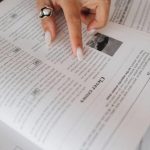
The Honest Truth About Dishonesty: An Exploration
Dan Ariely’s “The (Honest) Truth About Dishonesty,” available in PDF, explores the fascinating psychology behind why humans lie, cheat, and rationalize dishonest behavior. It dives into self-deception and moral compromise.
Dan Ariely, a behavioral economist, delves into the pervasive nature of dishonesty in his book, “The (Honest) Truth About Dishonesty.” The book, available in PDF format, explores the hidden forces that drive our tendencies to lie, cheat, and deceive, even when we strive to be honest. Ariely challenges the notion that dishonesty is solely the domain of a few bad apples, arguing that it’s a widespread phenomenon affecting individuals across all walks of life.
Through a blend of experiments and real-world examples, he reveals the surprising ways we rationalize our dishonest actions. The book examines how we bend the truth to benefit ourselves, all while maintaining a positive self-image. Ariely sheds light on the complex interplay between our moral compass and the temptations of dishonesty. His work encourages us to confront our own capacity for deceit, and offers insights into fostering ethical behavior.

Key Concepts from the Book
Ariely’s book, “The (Honest) Truth About Dishonesty,” introduces key concepts that explain why we lie, cheat, and deceive. These insights challenge traditional assumptions about morality and decision-making in various contexts;
The Fudge Factor: Rationalizing Dishonest Behavior
In “The (Honest) Truth About Dishonesty,” Dan Ariely introduces the concept of the “fudge factor,” which explains how individuals can engage in dishonest behavior while still maintaining a positive self-image. This fudge factor represents the psychological space within which we can rationalize our actions, allowing us to bend the truth without shattering our perception of ourselves as fundamentally honest people.
The book explores how various factors influence the size of this fudge factor, including the context of the situation, the presence of social norms, and our own personal values. Ariely demonstrates that even seemingly minor acts of dishonesty can have significant consequences, both for individuals and for society as a whole.
By understanding the fudge factor, we can gain valuable insights into the complex interplay between honesty and dishonesty, and develop strategies to promote more ethical behavior in ourselves and others. The PDF version offers an in-depth exploration of this concept.
The Role of Non-Monetary Value in Dishonesty
Dan Ariely, in “The (Honest) Truth About Dishonesty,” highlights a crucial aspect of our moral compass: our willingness to be more dishonest when dealing with non-monetary items. People are more prone to stealing office supplies than cash, demonstrating that distance from actual money increases the “fudge factor”. This is because we don’t directly equate these items with monetary value.
This concept is explored deeply within the PDF version of Ariely’s book. He posits that when the connection to money is blurred, our conscience is less active, allowing us to rationalize our dishonest actions more easily. Token systems, gift cards, and even favors can create this disconnect, leading to increased unethical behavior.
Understanding this principle is crucial for designing systems and environments that promote honesty, particularly in business settings. By recognizing the ways in which non-monetary value can encourage dishonesty, we can implement measures to mitigate these risks and foster a more ethical culture.
Business Practices and Unethical Behavior
Dan Ariely’s “The (Honest) Truth About Dishonesty,” available as a PDF, delves into how certain business practices inadvertently pave the way for unethical behavior. Ariely argues that the structure and norms within organizations can significantly influence the likelihood of dishonesty, both intentionally and unintentionally. High-pressure sales tactics, ambiguous ethical guidelines, and a lack of accountability can foster a culture where unethical conduct becomes normalized.
The book explores how the distance between actions and direct consequences can contribute to unethical behavior. For example, complex financial instruments or supply chains can obscure the impact of decisions, making it easier for individuals to rationalize dishonest actions.
Furthermore, Ariely examines the role of leadership in shaping ethical climates. When leaders engage in or tolerate unethical behavior, it sends a clear message that dishonesty is acceptable. This can create a ripple effect, leading to widespread unethical conduct throughout the organization.

Factors Influencing Dishonesty
Exploring factors influencing dishonesty, Ariely’s PDF examines creativity, justification, and self-deception. “The (Honest) Truth About Dishonesty” looks at how getting caught impacts behavior, impacting moral health in organizations.
Creativity and Storytelling: How We Justify Lies
In “The (Honest) Truth About Dishonesty,” Dan Ariely delves into how creativity fuels our ability to justify lies. We are all, in a sense, storytellers crafting narratives that allow us to bend the truth without shattering our self-image. This section examines the tales we tell ourselves and how we create stories we can believe. Creative individuals, it turns out, may be better liars, adept at redrawing the lines until they align with what we want to see.
Ariely explores how thinking creatively can lead us into trouble. Often, irritation spurs us onward, pushing us to find inventive ways to rationalize our actions. The book uncovers the surprising ways in which we rationalize dishonest behavior, often bending the truth without shattering our self-image as fundamentally good individuals. This self-serving narrative helps us maintain a positive view of ourselves, even when engaging in less-than-honest behavior.
The Impact of Getting Caught
Dan Ariely’s “The (Honest) Truth About Dishonesty” explores the intriguing reality that the fear of getting caught might not be as significant a deterrent to dishonesty as we assume. The book suggests that while the risk of being caught certainly plays a role, other factors often weigh more heavily on our decision-making process.
Ariely’s research indicates that the magnitude of the potential punishment and the perceived probability of detection interact in complex ways. Surprisingly, the actual consequences of getting caught may matter less than our perception of the likelihood of being discovered. Furthermore, the book highlights that our personal code of ethics, our ability to rationalize dishonest behavior, and the social norms surrounding dishonesty all contribute to our willingness to cheat, sometimes regardless of the risk of exposure. It’s a nuanced interplay of risk assessment and moral flexibility.
Self-Deception and Dishonesty
In “The (Honest) Truth About Dishonesty,” Dan Ariely delves into the intricate relationship between self-deception and dishonest behavior. He argues that we often lie to ourselves to maintain a positive self-image, even while engaging in actions that contradict our moral values. This self-deception allows us to rationalize our dishonesty, making it easier to justify our actions and avoid feelings of guilt or cognitive dissonance.
Ariely’s work suggests that self-deception acts as a buffer, shielding us from the full awareness of our dishonesty. We create narratives that minimize the severity of our actions, shift blame, or emphasize mitigating circumstances. By convincing ourselves that our behavior is acceptable, we can continue to view ourselves as honest individuals, even when we are not. This interplay between self-deception and dishonesty is a crucial element in understanding the prevalence of unethical behavior.

Implications and Applications
Understanding dishonesty’s roots, as explored in “The (Honest) Truth About Dishonesty” PDF, offers pathways for improving moral health and combating unethical behavior within organizations and personal lives.
Improving Moral Health

Based on Dan Ariely’s “The (Honest) Truth About Dishonesty,” improving moral health involves understanding the subtle ways we rationalize dishonesty. The PDF explores how small lies can escalate, impacting our self-perception. Recognizing the “fudge factor”—our ability to cheat to a certain extent while maintaining a positive self-image—is crucial.
Cultivating self-awareness helps us identify situations where we’re prone to bending the truth. By understanding our own tendencies, we can develop strategies to resist temptation. The book emphasizes the importance of honesty, not just towards others but towards ourselves, fostering integrity and ethical decision-making. It encourages proactive measures to avoid situations that compromise our values. By actively resisting self-deception, individuals can strengthen their moral compass and promote genuine honesty in their daily lives, thereby improving overall moral health.
Combating Dishonesty in Organizations
Based on insights from “The (Honest) Truth About Dishonesty,” available as a PDF, combating dishonesty within organizations requires a multi-faceted approach. The book highlights how business practices can inadvertently foster unethical behavior, both intentionally and unintentionally. Creating a culture of transparency and accountability is essential. Implementing clear ethical guidelines and consistently enforcing them sends a strong message;
Furthermore, fostering an environment where employees feel safe reporting misconduct without fear of reprisal is vital. Encouraging open communication and ethical leadership can significantly reduce instances of dishonesty. Regular ethics training and workshops can raise awareness and equip employees with the tools to navigate ethical dilemmas. By understanding the psychological factors that contribute to dishonesty, organizations can proactively address vulnerabilities and promote a culture of integrity. The implementation of these strategies will help organizations in creating a strong ethical foundation.
As “The (Honest) Truth About Dishonesty” (PDF) reveals, dishonesty is widespread. Understanding its roots is vital for improving personal ethics and organizational integrity, mitigating its detrimental impacts on society.
The Ubiquity of Dishonesty and Its Consequences
Dishonesty permeates various facets of life, from minor white lies to significant fraudulent activities. As Dan Ariely’s “The (Honest) Truth About Dishonesty” explores (available in PDF format), this behavior is more common than we might assume. The book uncovers how dishonesty manifests in personal relationships, business environments, and even within ourselves through self-deception.
The consequences of widespread dishonesty are far-reaching. Economically, it can lead to financial instability and distrust in markets; Socially, it erodes trust and damages relationships. Individually, it can lead to guilt, anxiety, and a compromised sense of self. Ariely’s work highlights the importance of understanding the psychological mechanisms that drive dishonesty to mitigate its harmful effects. The insights from “The (Honest) Truth About Dishonesty” provide a framework for addressing dishonesty at both individual and systemic levels, fostering a more honest and ethical society.




